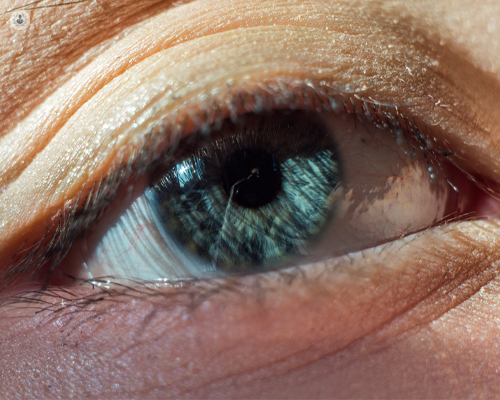What is ptosis, and why does it occur?
Written in association with:Ptosis is the medical term and condition that refers to the drooping of one or both eyelids, and can lead to vision problems if left untreated.
In our latest article here, Miss Branka Marjanovic is on hand to detail more about the eyelid-affecting condition. The experienced consultant ophthalmic and oculoplastic surgeon explains the main causes of ptosis, the treatment options, and reveals the main reasons why patients seek surgery for ptosis.

What is ptosis of the upper eyelid?
It is the drooping of the upper eyelid.
Why does ptosis occur?
It can be congenital (present in birth) or can be acquired later in life (acquired ptosis). Congenital ptosis occurs as a result of a defect in the muscle that is responsible for raising the eyelids. The most common cause of acquired ptosis is due to the stretching, detachment, or weakness of the muscle that is responsible for lifting the upper eyelid. This can occur as a result of ageing and contact lens wear.
Weakness of the eyelid muscles that are responsible for elevating the upper eyelid may be due to neurological issues, a problem with nerves that control the upper eyelid muscles, or a mechanical defect such as a cyst.
Due to the fact that numerous amounts of ptosis causes exist, it is paramount to undergo a thorough ophthalmic examination before deciding on further steps that may need to be taken with regards to the underlying cause(s) and management options.
How is ptosis treated?
Treatment for ptosis is usually surgical. For babies and children, this can be performed under general anaesthesia. For adults, the surgery is usually performed with local anaesthesia under sedation. The type of operation depends entirely on the cause(s).
Surgery usually involves shortening or detaching the muscle responsible for lifting or raising the upper eyelid, and can be performed through the skin of the patient. In the case of excess skin on the upper eyelid, ptosis surgery is combined with blepharoplasty surgery.
Can ptosis affect both eyelids?
Yes. Ptosis can affect one or both eyelids.
What happens during the recovery period?
Following surgery, a dressing is placed on the patient’s eye area, and should be left on at least overnight the first night after surgery to reduce any swelling. The dressing is then removed the following morning after surgery.
The patient will be prescribed eye drops and will also be given detailed instructions with regards to how to clean the area. Usually, there is no significant pain after surgery, and any discomfort that may be experienced can be relieved with paracetamol. Ice packs are recommended if swelling occurs.
It is vital to keep the area dry and avoid direct showering for the first seven to 10 days after surgery. Eye make up and swimming should be avoided for the first two weeks after surgery.
How risky is the procedure?
It is a very safe procedure. However, some swelling and bruising on the eyelids is common, but usually subside after several days. Dry eyes can occur after ptosis surgery due to the elevation of the eyelid, and may result in the feeling of sore eyes. This is why we prescribe intensive eye drops after surgery.
Other potential complications include the eyelids either being too high or too low, or having an asymmetric curve. This may require further surgery if it happens.
What is the success rate of ptosis surgery?
Around 80 to 85 per cent of ptosis is corrected after the first ptosis surgical procedure. Success rates will depend on the type of operation.
Why would one have ptosis surgery?
Ptosis can lead to vision problems, which may make driving quite hazardous. It is also quite aesthetically unsatisfactory for many patients. These are typically the main reasons why ptosis surgery is considered.
Miss Branka Marjanovic is a highly revered and exceptionally skilled and trusted consultant ophthalmic and oculoplastic surgeon who can help guide you in the direction of ptosis surgery if applicable to you. Contact her today via her Top Doctors profile to schedule a consultation.


